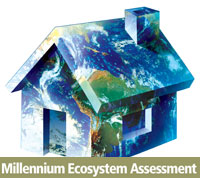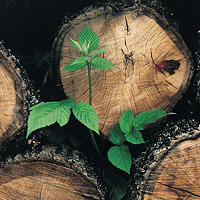History of the Millennium Assessment
- Ayrıntılar
- Kategori: Millennium Ecosystem Assessment
On this page: Roots | WRI and the Exploratory Steering Committee | Transition Phase and Launch | Assessment Work and Release of Findings
Roots
 The history of the MA can be traced to demands from both scientists and policymakers. By the mid-1990s, many individuals involved in the work of international conventions such as the Convention on Biological Diversity (CBD) and the Convention to Combat Desertification (CCD) realized that the extensive needs for scientific assessments within the conventions were not being met through the mechanisms then in place. In contrast, effective assessment process like the Intergovernmental Panel on Climate Change (IPCC) did exist for such treaties as the Framework Convention on Climate Change and the Montreal Protocol on Substances that Deplete the Ozone Layer.
The history of the MA can be traced to demands from both scientists and policymakers. By the mid-1990s, many individuals involved in the work of international conventions such as the Convention on Biological Diversity (CBD) and the Convention to Combat Desertification (CCD) realized that the extensive needs for scientific assessments within the conventions were not being met through the mechanisms then in place. In contrast, effective assessment process like the Intergovernmental Panel on Climate Change (IPCC) did exist for such treaties as the Framework Convention on Climate Change and the Montreal Protocol on Substances that Deplete the Ozone Layer.
Scientists had also identified a need for an international ecosystem assessment. Although major advances had been made in ecological sciences, resource economics and other fields during the 1980s and 1990s, these new findings appeared to be poorly reflected in policy discussions concerning ecosystems. Recognizing these shortcomings, a panel of 40 leading scientists prepared a draft international assessment - “Protecting our Planet, Securing our Future: Linkages Among Global Environmental Issues and Human Needs”. The study, published in November 1998 by UNEP, NASA, and the World Bank, called for “a more integrative assessment process for selected scientific issues, a process that can highlight the linkages between questions relevant to climate, biodiversity, desertification, and forest issues.”










